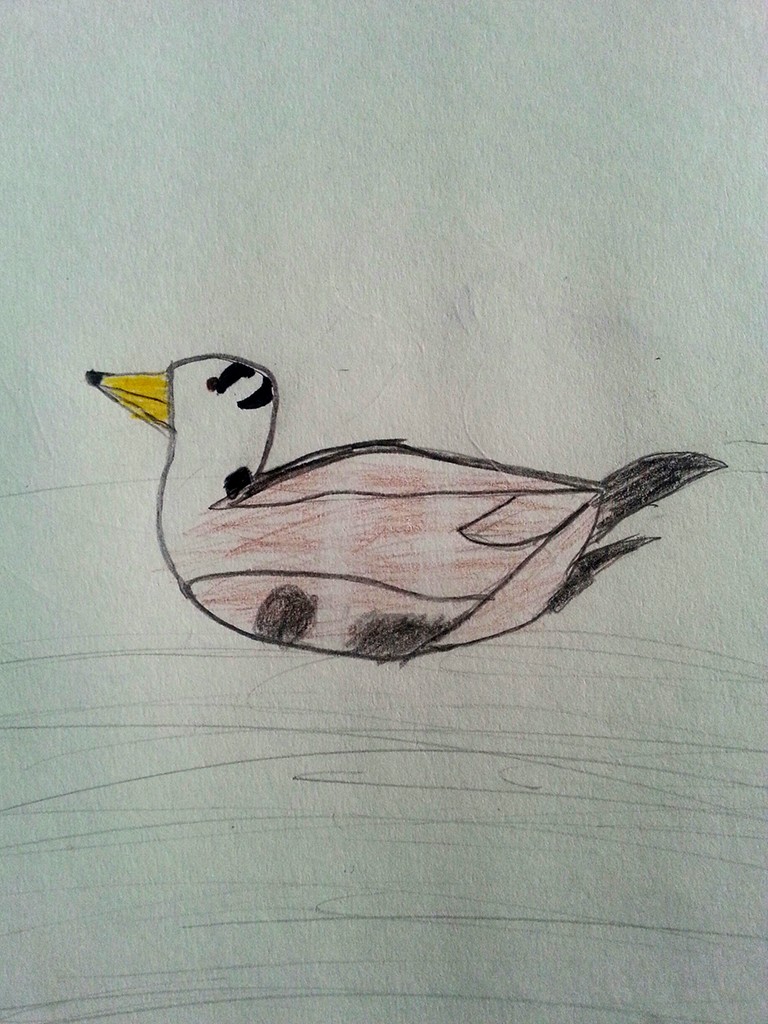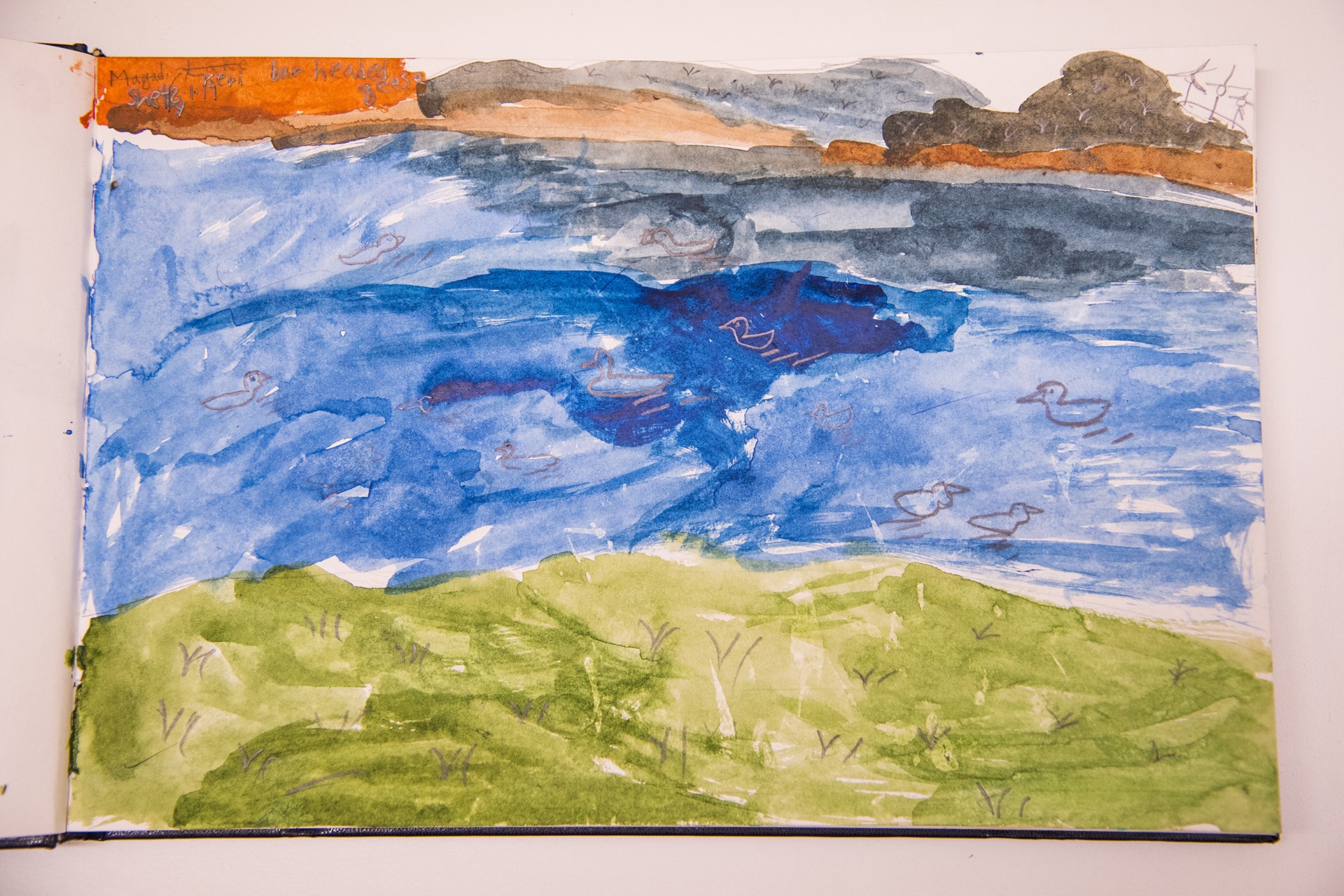I want to share the story of my trip to see Bar-headed Geese in January. My father drove me to a lake near Lakshmeshwar called Magadi Lake, where we didn’t see any birds as the lake had gone completely dry. We were very disappointed since there were no birds and we had gone so far just to see them. We asked an uncle in the petrol bunk if he knew where the birds would have gone and he told us to go to Shettikeri Lake, which was much farther away. So we went there and we got to see the birds. The place was very beautiful but also very hot. These birds are very fascinating to me, since I got to know that they had migrated all the way from Central Asia to Shettikeri, Karnataka. I also read that they fly over the Himalayan ranges and even over Mount Everest.
Bar-headed Geese have two bars on their heads and a small patch of black on their necks. Their beaks are orangey-yellow and have a black tip. They are known to be the highest flying birds in the world.
I felt very excited to paint them as I saw hundreds of them swimming and ducking their heads down into the water. I observed one of the geese put its head into the water and swam with its tail up for a long time. I guessed it was looking for something to eat, but I wasn’t sure.
My Dad held an umbrella for me to paint the geese peacefully, so the paints didn’t dry up in the heat.
Guest Editor Diaries: Of snakes, stranglers and weeds - Eight-year-old Guest Editor Avni Meda assigns stories to the NiF team.
The long and the short of it – Herpetologist and National Geographic Adventurer Gerry Martin on his favourite subjects: snakes.
Weed this carefully – Journalist Shamsheer Yousaf explains why harmless-looking weeds are so dangerous for our forests.
Pssst! Coil up and read – Children’s book author Bijal Vachharajani picks out two books featuring our favourite slithery creatures.


